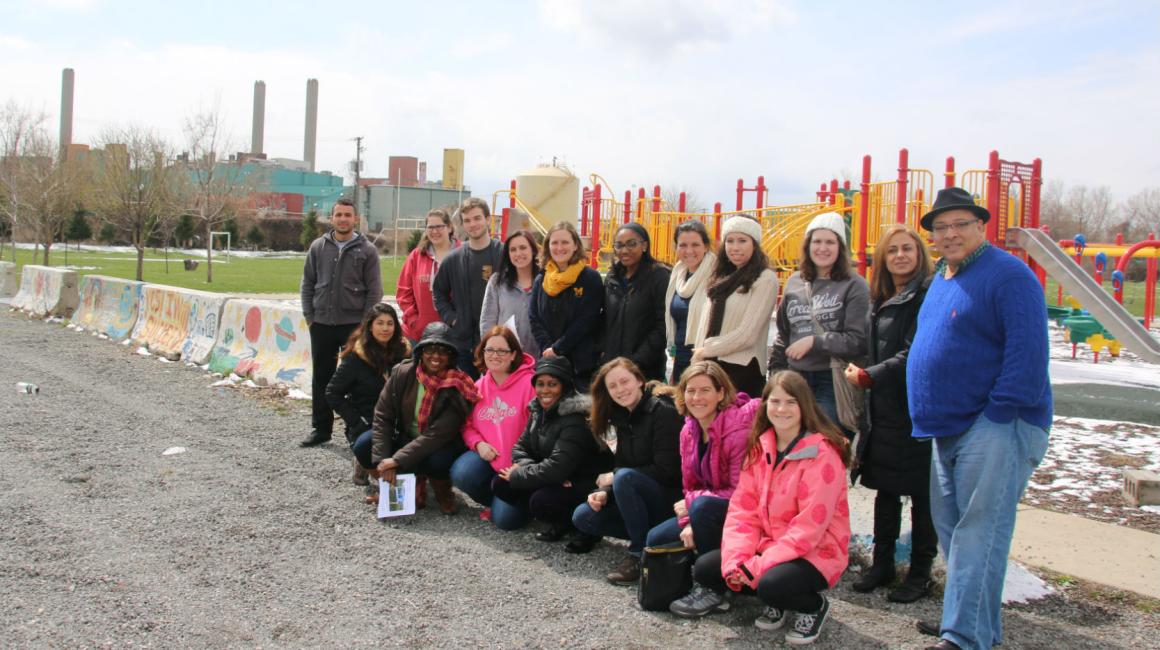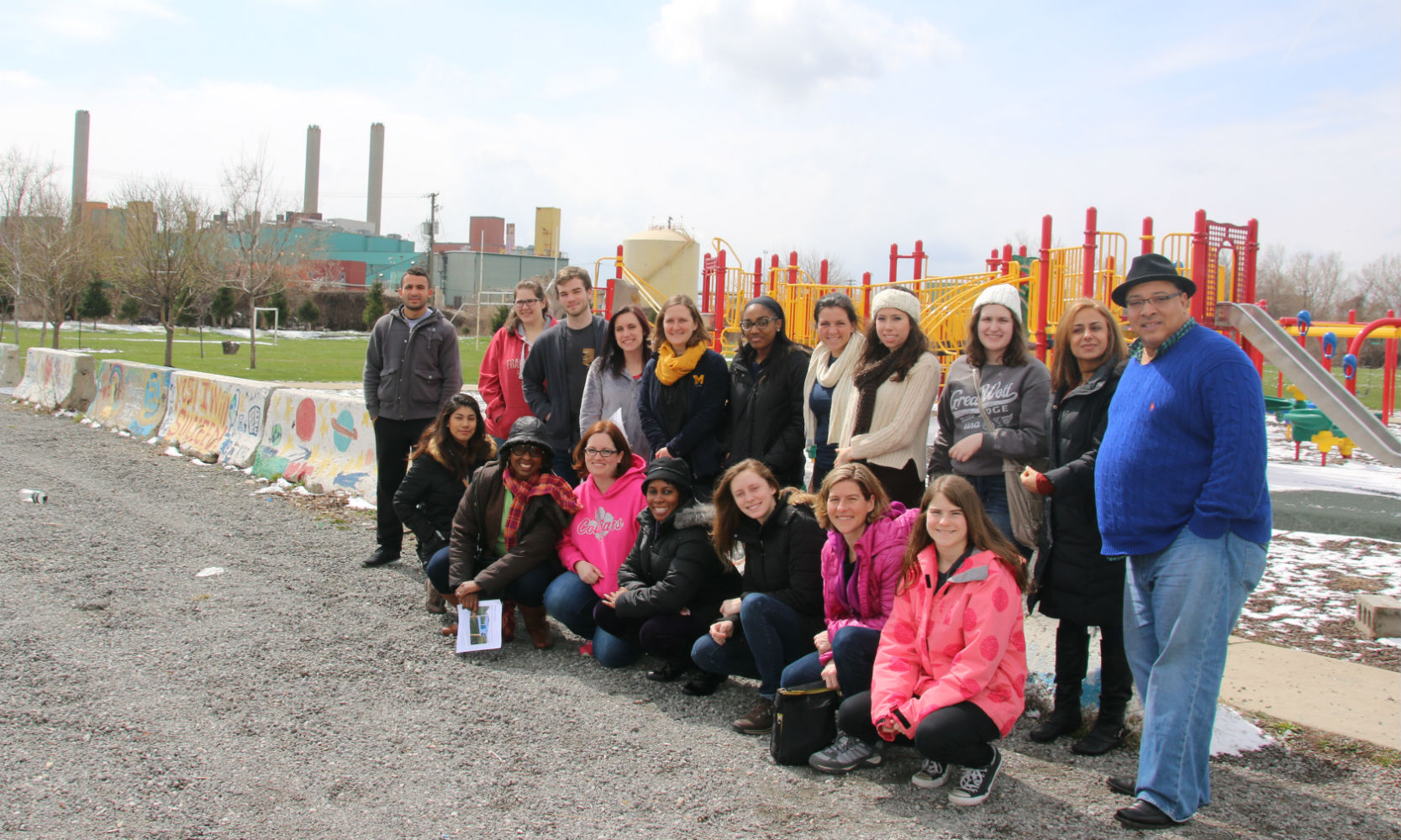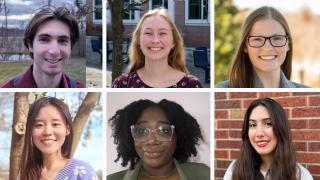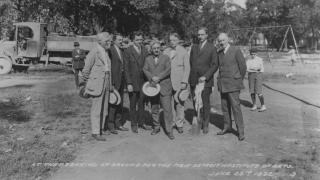
A brightly colored red and yellow playground is a favorite place for children in Detroit’s Delray neighborhood.
UM-Dearborn students walked around the large area off of Leigh Street and noticed that it had everything a kid could want—slides, monkey bars and swings.
But it also had something the community didn’t want—a toxic stew of pollution. There were gray clouds pouring from the Detroit Waste Water Treatment Plant smokestacks, metallic air-borne particles coming from Zug Island’s steel manufacturing work, and the smell of vehicle emissions from the heavily traveled I-75 and Ambassador Bridge road ways.
“This breaks my heart,” said Jenifer Pifer, a child life specialist major. “Kids play here. People live here. This is what their reality is.”
Nearly 20 people—students, faculty and community members—recently took part in an Environmental Justice Tour of the Motor City.
Organized by Health and Human Services Assistant Professor Natalie Sampson and funded through a grant from the Hub for Teaching and Learning Resources, the tour bus visited eight sites in the city, including the Wastewater Treatment Plant, the Marathon Oil Refinery and the Detroit Municipal Waste Incinerator.
They also stopped to meet with Detroiters who were working to make a difference in their communities, like Eastside Community Network Community Engagement Manager Orlando Bailey, who works on urban gardens in the Mack Avenue Green T Project, and Scott Brines of the Southwest Detroit Community Benefits Coalition.
“You can share stories about this in class all day long. But when you go out and see it and talk to residents, there is much more of a lasting impact,” said Sampson, who offered the tour as part this semester’s Introduction to Environmental Health course. “We’ve been discussing the science and the policy in class, but getting on the ground and seeing how it all plays out in the real world is important.
“It might spark students to think career-wise too—either organizations they want to work with or questions for future research.”
Sampson, who frequently collaborates on city environmental efforts, invited two of her Detroit activist colleagues— Kimberly Hill Knott and Vincent Martin—to narrate the tour and answer questions.
Hill Knott, Detroiters Working for Environmental Justice (DWEJ) director of public policy, said the nonprofit organization gives tours frequently. And the effect of the tour is sobering.
“We take lawmakers, company heads, hip-hop artists on tours like this to see what is going on around our city,” she said. “By the end of the tour, there is usually silence because people are thinking about what they just saw. We want to bring awareness, so that change can come next.”
Despite the many environmental problems in Detroit, Sampson, Hill Knott and Martin also wanted participants to understand that many are working hard to address threats to environmental health and justice.
The tour stopped at Earthworks Urban Farms, a 2.5-acre certified organic farm in the middle of the city, and the Mack Avenue Green T Project, a land reuse concept where blighted structures are removed, art is installed and gardens are grown.
“I also want students to see the innovative collaborations happening throughout the city—like Orlando’s work with youth flower gardens and markets on the East Side,” Sampson said.
Arriving back to campus, senior Margaret Kelley said the tour was a reality check—one she was glad to have.
“Even with Detroit’s revitalization, people in the neighborhoods have been left out of the conversation,” said Kelley, a health policy studies major. “Making people, like myself—who was a suburbanite my whole life—aware of these environmental and quality of life issues is really important. And I think it will change the conversation going forward. “







